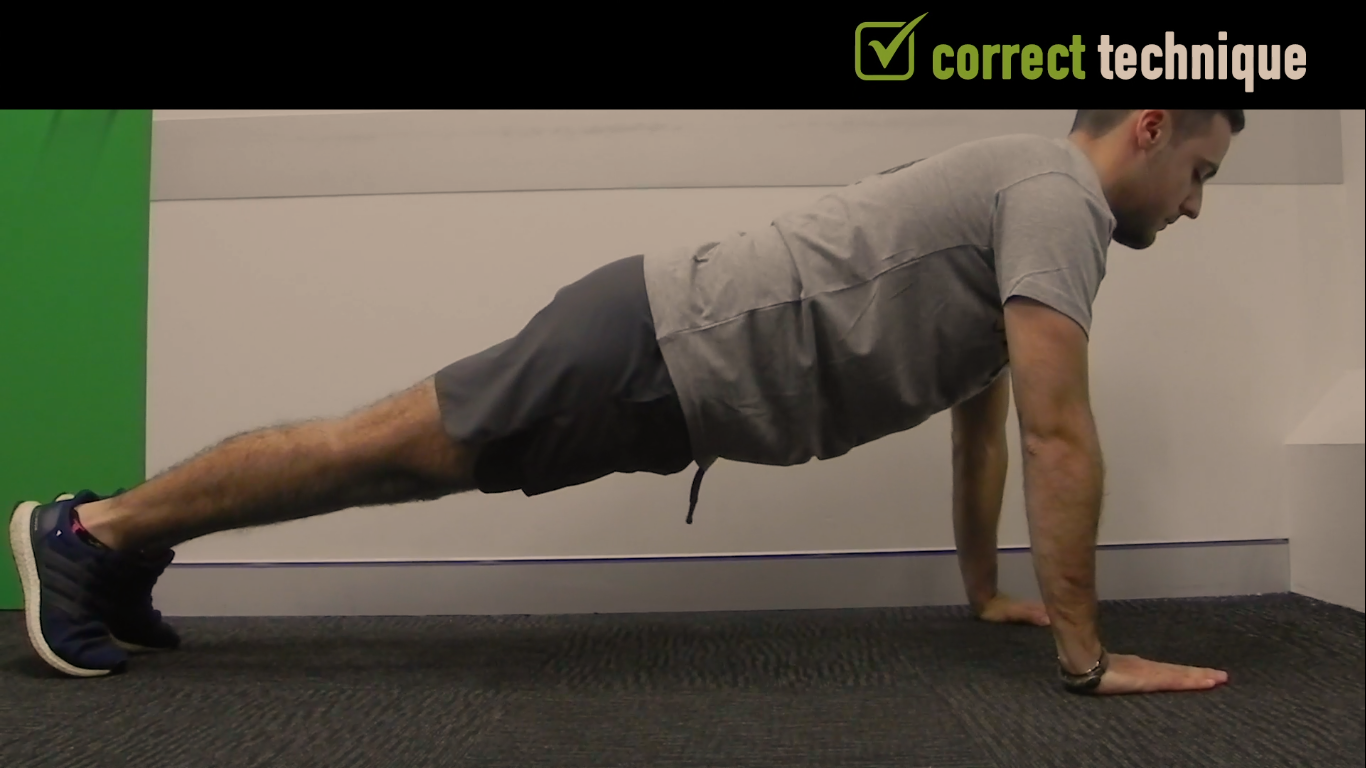Correct technique is one of the most critical aspects of any resistance training program, and is essential in maximising safety and performance in the gym. We’ve chosen 3 exercises that commonly feature in most training programs that you might not be performing correctly.
1. Push Ups
A cult-classic in the gym setting, push-ups have stood the test of time in the world of chest work outs.
Begin the exercise by laying prone (on your stomach) on the floor. Raise yourself onto your toes and hands, with your hands placed directly underneath your shoulder. Ensure you maintain a neutral spine by bracing your core and activating the glutes. Slowly lower your chest to the floor, leaving 1-2 inches of space between them (the width of a clenched first). Slowly push through your arms and chest and return to your starting position.
Common mistakes include extending the back and letting the hips drop, or not controlling the rate at which you lower your chest resulting in the movement being too small for a full push-up. Take your time!
There are many variants of a push-up, including wide-stance and diamond push-ups to name a few. These are instances where the positioning of your hands are relative to the type of push-up you’re doing.
2. Squats
Squatting is certainly high up on the list of advanced exercises to perform in the gym. It carries the risk of injury (as all exercises do), and as such, it’s essential that you can perform one of the hardest yet most widely used exercises. There are many variations, including barbell, free weight, and body weight squats. Each of these are performed in a similar fashion.
Begin with your feet shoulder-width apart. Brace your core, slowly lower your body and flex the knees until they reach a 90 degree angle. While doing so, maintain a neutral spine and ensure your feet are pointing straight and your knees maintain a stable position, ensuring they do not travel over the toes of your feet as you lower your body. Once you reach 90 degrees, begin to slowly extend your knees by pushing through your heels, and raise your body to your starting position. DO NOT lock your knees at any point during the exercise.
I find there are two very common errors in technique when it comes to squats: extending your lumbar spine when trying to keep a neutral spine, or dropping too low resulting in lumbar flexion. These can both cause unnecessary stress on the lower back and increase your risk of injury.
I would not recommend barbell squats until you’re comfortable with technique using body weight or free weights. Start out lightly until you have mastered the technique, before beginning to truly challenge yourself.
3. Planks
So you’re on your way to a 6-pack! The plank is likely one of the first exercises that comes to mind when people think of a core workout. But for what would seem like a fairly simple exercise, technique plays a very important role in ensuring core activation is maximised.
Just like the push-up, begin in a prone position. When ready to begin the exercise, raise onto the toes of your feet and your elbows. The elbows should rest beneath the shoulders. Maintain a neutral spine, brace your core, and activate your glutes. Once complete, slowly return to a prone position.
There are a few clear-cut mistakes that can be seen in most planks. These include either flexion or extension of the hips, resulting in the position of the spine no longer being neutral. This will then reduce the force through the core and glutes, resulting in an ineffective workout.
One of the lesser known mistakes of the plank is positioning of the neck. Few people realise that the neck is still part of the spine, and as such it also needs to remain in a neutral position. Often you will find gym-goers swinging the neck and looking around the room in agony. Once your neck has moved, so too has your technique and the plank has finished.
Next time you’re in the gym keep an eye out for people who are doing these exercises, or be mindful of how you perform them. See if you can spot anything that needs to be corrected and ensure you correct yourself. Correct technique is the forefront of a safe and effective resistance or strength training program and as such it is essential that you understand how to perform exercises correctly.
JONATHON FERMANIS
B.EXPHYS, ESSAM
Accredited Exercise Physiologist

